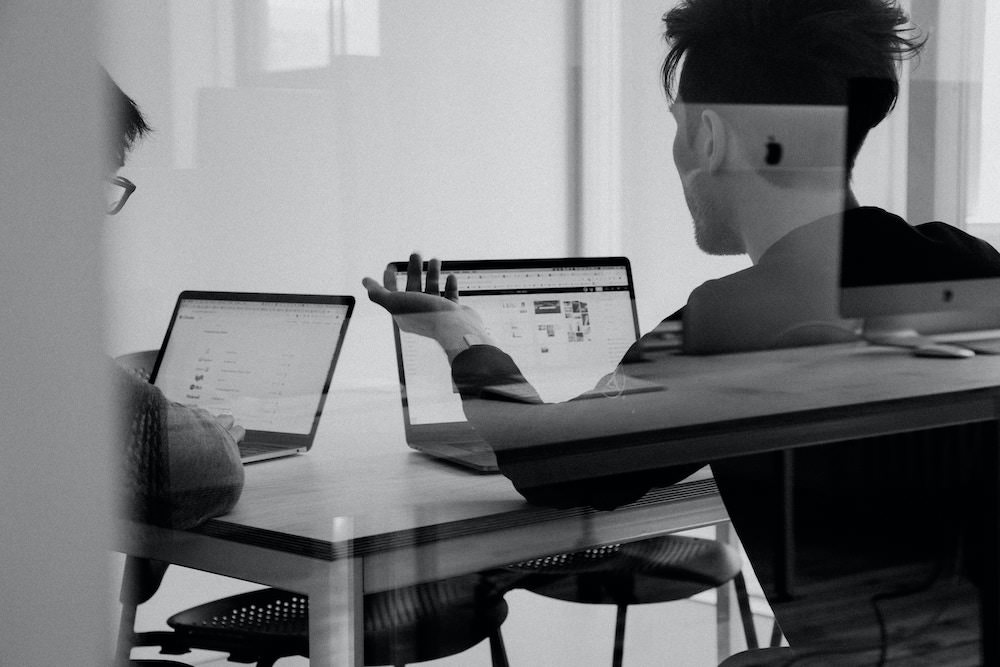Collaboration Tips: How to Collaborate Among Designers
Collaborations can be both a blessing and a curse, sometimes simultaneously. Working with another designer on a project can challenge you in ways you never thought possible, but it might also drive you to the point where you question whether it was worth the effort.
Today, we will explore some methods for approaching fellow designers for collaborations, and discuss how to maintain your sanity once you decide to take the plunge.
Guide to Online Collaborations: Useful Tips, Tools & Apps
Note: This post was first published on the 4th Sept, 2012. The art of online collaboration has been... Read more
Choosing a Partner
You shouldn’t simply choose to collaborate with someone because they are a friend or because they ask you to. Several criteria need to be met by anyone seeking a creative collaboration with you.
First, will this person help you achieve anything specific, whether creatively or career-wise? If you’re a full-time designer, your time is precious, and spending it on a collaboration that won’t bring you any value is not a wise decision.

Second, how does their skill set compare to yours? Great collaborations can occur with designers who are both similar and very different from you. However, it’s crucial to ensure that the two of you can mesh your skills together in a meaningful way.
How Much to Contribute
A collaboration can be a 50-50 effort, with both (or all) parties sharing equal responsibility towards the completion of the project. At other times, however, you might be asked to contribute something small yet vital, such as a type treatment or even just the use of your intellectual property or logo. It’s up to you to decide how much you want to be involved in the creative process.

When I collaborate with someone, I prefer to be actively engaged. To me, unless I’m directly involved in the production of the work – generating ideas, sketching, taking notes, making revisions – it’s not as appealing. Choose the level of contribution that best aligns with your personality and creative goals.
Looking Good
Whatever you work on, any creative piece that bears your name should be an asset to your portfolio, rather than something you’re ashamed of. When I was just starting out as a designer and before I knew better, I would agree to collaborate with friends whose work was sub-par. I did this simply because I didn’t want to reject them or appear snobbish.

15 Project Types You Will Face In Freelancing
Have you ever heard of the toughest species on the Earth? It's named Toughus Freelancerus, common named Freelancers.... Read more
The resulting work was always disappointing. I never had as much creative input as I wanted, and, consequently, the quality would suffer. It’s funny how those who are most eager for collaboration tend to be the biggest control freaks, but I digress.
If you can’t be sure of the quality of the finished work, you should probably pass.
Collaboration and Legal Issues
If the project is major or has the potential to generate significant revenue or media attention, it’s crucial to determine the details of compensation and other agreements. A contract may be essential in this situation, and there are abundant resources, both online and offline, that can assist you in drafting one to protect both you and your partner in any conceivable circumstance.

Even if the collaboration is motivated solely by creative or artistic interests, and there’s no expectation of any tangible gain from the project, unexpected windfalls of cash or fame can change the dynamics. One partner might feel slighted or believe they are not receiving as much recognition as the other. Addressing the legal aspects early on can help prevent disagreements from escalating into lawsuits.
8 Must-have Contract Clauses for Freelancers
Do you have a contract when you begin a freelance project? If not, then you should. Working without... Read more
Emotional Response
Building on the previous point, what occurs when one partner receives more recognition for a collaboration than the other or others? This imbalance can lead to hurt feelings and resentment, and may even result in legal troubles if the contract is not carefully crafted. Since designers often have sensitive egos, if someone feels slighted, it becomes vital to engage in damage control before the situation escalates.
Creating a strict outline detailing who is contributing what might appear overly meticulous, but in my experience, it has been instrumental in resolving disputes. This method forces one party to recall the original agreement, thus cooling tensions. If someone still feels insulted, there may be little recourse other than making a mental note not to collaborate with them in the future.
Conclusion
Collaborations can be amazing experiences that may catapult your career as a designer to new heights, both professionally and creatively. Having a clear understanding of what to expect can enrich the experience and help you avoid potential disasters before they occur.